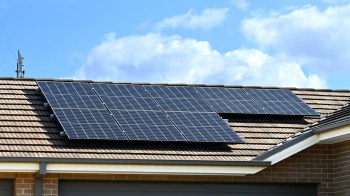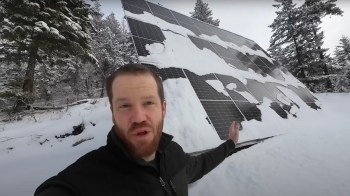The key to long-lasting perovskite solar cells is reportedly being unlocked through dip-and-swish testing in China.
Tech Xplore reported on a process that limits "undesirable chemical reactions" that happen after crucial passivization, a technique that neutralizes defects incurred as the panels convert sunrays into electricity. The key is a quick bath in a fluorinated isopropanol solution.
A video clip shared by Tech Xplore shows a solar cell being picked up with tweezers and dipped into fluorinated isopropanol and regular isopropanol. This removes extra passivization chemicals.
The bath "reduces the reactivity of passivator molecules with the perovskite and allows the use of high passivator concentrations, ensuring complete defect passivation," the experts wrote in a lab summary, per Tech Xplore. The team is from Westlake University, Zhejiang University, and other Chinese institutes.
"A subsequent rinse … removes the excess passivator molecule. We demonstrate that the strategy has a broad processing window with high tolerance for deviations to the passivator concentration and is applicable to various device architectures, perovskite compositions, and device areas," per the summary.
Perovskite is a promising mineral group capable of efficiency rates — the percentage of sunlight turned into electricity — of nearly 30%. Common silicon panels are typically in the mid-20s or lower. But perovskites only last for a couple years, while other types can work well for decades, according to Solar Magazine and the U.S. Department of Energy.
Save $10,000 on solar panels without even sharing your phone number Want to go solar but not sure who to trust? EnergySage has your back with free and transparent quotes from fully vetted providers that can help you save as much as $10k on installation. To get started, just answer a few questions about your home — no phone number required. Within a day or two, EnergySage will email you the best local options for your needs, and their expert advisers can help you compare quotes and pick a winner. |
Experts have been working on unique innovations to utilize the strengths of both kinds, including combining them in one cell. Rubber-like, flexible panels are also part of amazing inventions helping to grow the use of solar energy in the world.
U.S. solar has surpassed 10% of electricity production for the first time, according to PV Magazine. And global capacity is expected to grow 2.7 times by 2030, the International Energy Agency adds. Stateside, the sector is losing federal tax credits for both commercial and residential projects because of President Donald Trump's spending bill that's friendlier to dirty fuels.
Home solar tax incentives now expire at the end of the year. But EnergySage can help you secure the incentives while they last, as well as find the right installer. The guidance can save you thousands of dollars on upfront costs. Benefits are long-term, including reduced or eliminated utility bills. A government study found that the average American household saves about $700 annually with a system, even after expenses.
Going solar can make running household appliances, including heat pumps, cheaper too. If you're looking for an affordable HVAC upgrade, check out Mitsubishi's line of heat pumps.
TCD Picks » Upway Spotlight
💡Upway makes it easy to find discounts of up to 60% on premium e-bike brands
|
If you could build a home anywhere, where would you put it? Click your choice to see results and speak your mind. |
On the commercial side, Colorado-based Clearview founder Michael Thomas posted on LinkedIn that the country's largest cleaner energy developer, NextEra Energy, "isn't slowing down."
Clearview tracks progress on the energy transition. The report was based on an earnings call.
"The company doesn't see a cliff coming after the tax credits expire," Thomas wrote, noting growing data center demand will suck up loads of electricity, requiring energy projects that can be onboarded quickly.
Improved solar cells can aid the shift, and the Chinese process is being touted as an improvement for perovskites that could lead to large-scale production. It's important, as solar energy is generated with no heat-trapping air pollution, a burden for the lungs of mostly everyone on Earth, according to the World Health Organization. The fumes are linked to aggravated asthma, cardiovascular diseases, and even dementia, per recent studies.
"Other research teams could apply the same strategy or adaptations of it to their own solar cells to improve their uniformity and performance," Tech Xplore concluded about the bath method.
Join our free newsletter for weekly updates on the latest innovations improving our lives and shaping our future, and don't miss this cool list of easy ways to help yourself while helping the planet.














